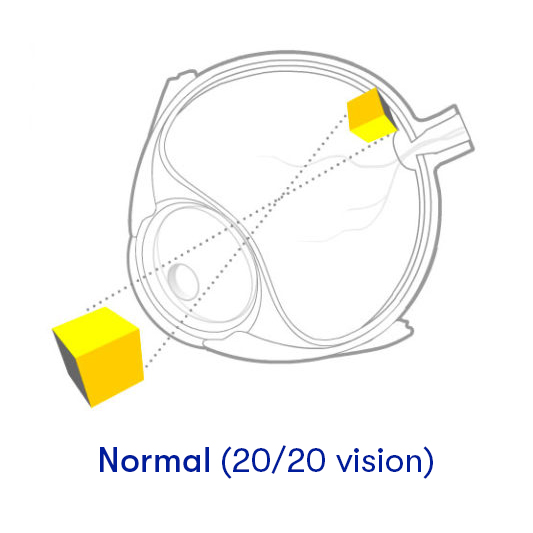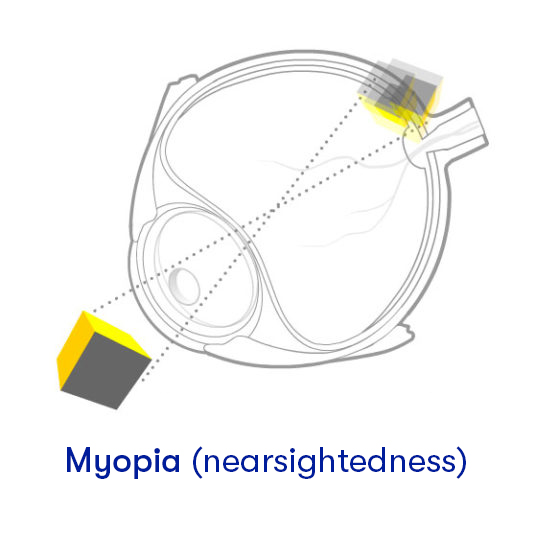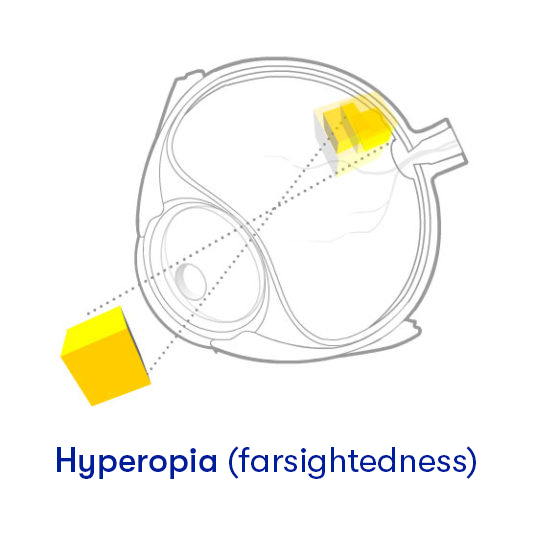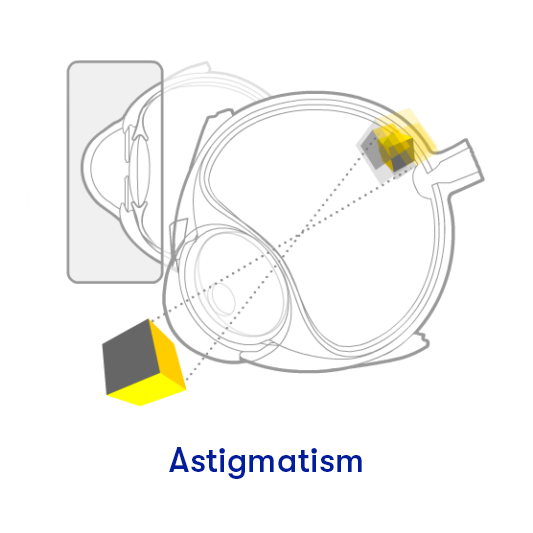Common vision problems
Having problems with your eyes is not a fun experience. Long-time glasses and contact lens wearers will attest to the continual frustration they experience. It’s a conquerable issue for many but the persistence of the problem can become tedious over time.
The unfortunate truth is that vision problems aren’t likely to go anywhere for a long time. As long as we’ve had eyes, we’ve had issues with seeing. Luckily, if there were ever a time to have an eyesight problem, it’s today – there are more options available now than ever before.
Who has vision problems?
Over ten million people in the United States have some eyesight problems. These issues can range from simple nearsightedness which is easily correctable to full blindness with few treatment options. Most people will have vision problems in their lifetime, whether they were born with poor sight, or it was a gradual progression with age.
For such a small organ, the eye has many parts and a large responsibility. This small, intricate area is prone to issues due to its sheer complexity. Just think about cameras, wristwatches, and computers. There are so many tiny parts all doing their own thing, but one error somewhere along the way can cause the whole system to malfunction.
Eye health is critical in this regard. The possibility for error is so high that even the smallest problems can have a huge impact on eyesight. Fortunately, most people don’t have critical vision impairment. Eyes are pretty good at doing what they do, they just might need some help along the way.
Some of the most common vision problems are caused by refractive errors within the eye and include amblyopia, myopia, hyperopia, presbyopia, and astigmatism. Many of these vision problems can be resolved with contacts or glasses which wasn’t the case 100 years ago.
20/20 vision

20/20 vision is considered normal human vision. This means that our eyes can see an object twenty feet away as if the object truly is twenty feet away.
If someone has 20/30 vision, they can see objects twenty feet away as though they are thirty feet away, meaning their vision is weaker than the average human's. 20/10 vision would indicate that an individual can see something twenty feet away as though it is only ten feet away, which is above-average vision.
Most people who have vision significantly worse than 20/20 wear glasses or corrective lenses.
20/20 vision does not indicate perfect vision, however. Things like depth perception, peripheral vision, and the ability to differentiate colors all are included in what is considered perfect vision.
Myopia (nearsightedness)

Myopia is better known as nearsightedness and affects over twenty-five percent of the population. People with myopia can see near objects clearly but struggle to see distant objects.
Myopia is generally caused when the eyeball is slightly too long. Which causes the retina to incorrectly perceive light from distant objects. Light still reaches the cones and rods but does so improperly, causing objects in the distance to become blurred and out of focus.
Myopia can also be caused when the cornea is curved or bulged, causing light waves to become distorted. The refraction that results mimics the effects of an elongated eyeball.
People who experience myopia are generally diagnosed in late childhood or early adolescence and in most cases continue to worsen until early adulthood. Myopia is a hereditary disease and, despite the urban legend, isn’t caused by reading in dim light or any other form of eye strain.
Most people who suffer from myopia can correct the problem with glasses or corrective contact lenses.
Hyperopia (farsightedness)

While myopia is nearsightedness, hyperopia is farsightedness. In this refractive vision problem, items in the distance appear clear but near objects are blurry or out of focus.
Its cause is the opposite of myopia: hyperopia is caused when the eyeball is too short. This effect allows light waves to hit the retina before fully coming into focus. Like myopia, an improperly curved cornea can also be at fault.
Hyperopia is also hereditary and is generally diagnosed in children or adolescents. Most young children have hyperopia to a small degree that goes away naturally in the teenage years.
Presbyopia (aging eye)

As our bodies age the part of the eye that allows us to focus, the lens, becomes more rigid and less flexible. When this happens, we lose our ability to focus on small, near details. Things like words and images close by, such as in books or on menus become much more difficult to perceive.
Most people first notice presbyopia around the age of 40. Presbyopia occurs in all people, regardless of other vision problems. Presbyopia is unavoidable. Fortunately, there are more options than ever to treat presbyopia, which makes this part of aging a bit more manageable.
Astigmatism

Unlike myopia and hyperopia, which only affect a certain range of vision, astigmatism is the overall inability to focus clearly. Astigmatism is generally caused by an irregular curvature of the cornea, allowing light waves to refract in a way that causes blurry or distorted vision at all ranges.
It’s like hyperopia and myopia in the sense that it’s hereditary. If your parents have astigmatism, you’re more likely to have it as well. That doesn’t mean you’re off the hook if your parents have perfect 20/20 vision. Like all vision problems, it can sometimes just occur without a genetic component.
Fortunately, with the right prescription and glasses or contacts, it’s completely treatable.
What now?
Hyperopia, myopia, astigmatism, and presbyopia are certainly the most common vision problems in the world. They are incredibly widespread and affect millions of people – most of the time it’s something they’ll live with for their entire lives.
Fortunately, this is the best time in human history to have a vision problem. There is an abundance of resources available to make sure having poor eyesight doesn’t slow you down. You can even get a renewed prescription for contact lenses online anytime with Express Exam.
If you’ve dealt with vision problems for a while, then you know how frustrating running out of contacts can be. It’s especially frustrating if your prescription is expired. We totally get it. This is why we invented Express Exam to make getting a new prescription for your contacts a breeze.
While we still have a ways to go with improving vision care accessible to everyone, but for most people vision problems are not the life-altering problem they once were.
Original Publish Date: 1/24/2020
Updated: 3/3/2023





